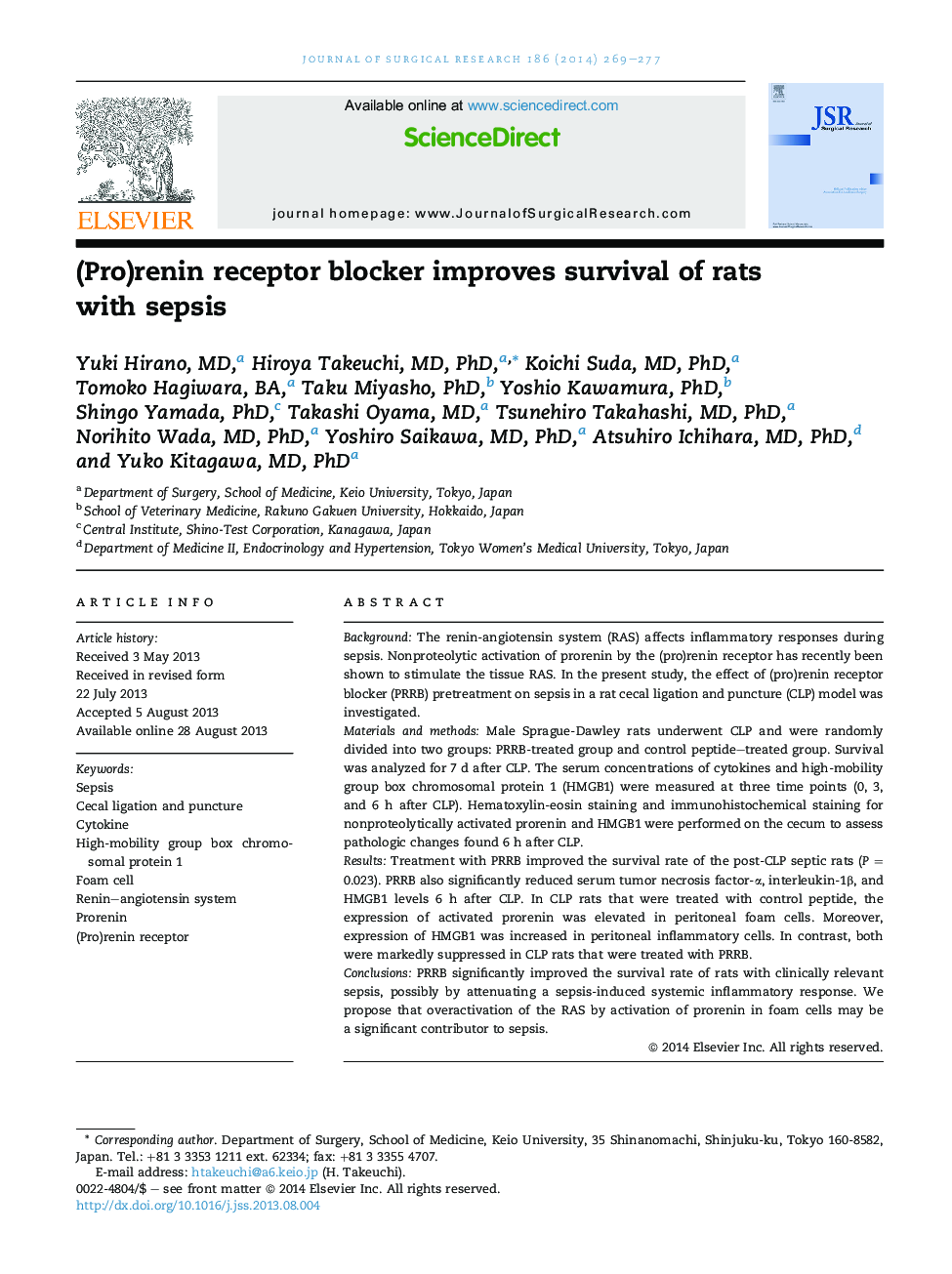| Article ID | Journal | Published Year | Pages | File Type |
|---|---|---|---|---|
| 6254180 | Journal of Surgical Research | 2014 | 9 Pages |
BackgroundThe renin-angiotensin system (RAS) affects inflammatory responses during sepsis. Nonproteolytic activation of prorenin by the (pro)renin receptor has recently been shown to stimulate the tissue RAS. In the present study, the effect of (pro)renin receptor blocker (PRRB) pretreatment on sepsis in a rat cecal ligation and puncture (CLP) model was investigated.Materials and methodsMale Sprague-Dawley rats underwent CLP and were randomly divided into two groups: PRRB-treated group and control peptide-treated group. Survival was analyzed for 7 d after CLP. The serum concentrations of cytokines and high-mobility group box chromosomal protein 1 (HMGB1) were measured at three time points (0, 3, and 6 h after CLP). Hematoxylin-eosin staining and immunohistochemical staining for nonproteolytically activated prorenin and HMGB1 were performed on the cecum to assess pathologic changes found 6 h after CLP.ResultsTreatment with PRRB improved the survival rate of the post-CLP septic rats (P = 0.023). PRRB also significantly reduced serum tumor necrosis factor-α, interleukin-1β, and HMGB1 levels 6 h after CLP. In CLP rats that were treated with control peptide, the expression of activated prorenin was elevated in peritoneal foam cells. Moreover, expression of HMGB1 was increased in peritoneal inflammatory cells. In contrast, both were markedly suppressed in CLP rats that were treated with PRRB.ConclusionsPRRB significantly improved the survival rate of rats with clinically relevant sepsis, possibly by attenuating a sepsis-induced systemic inflammatory response. We propose that overactivation of the RAS by activation of prorenin in foam cells may be a significant contributor to sepsis.
